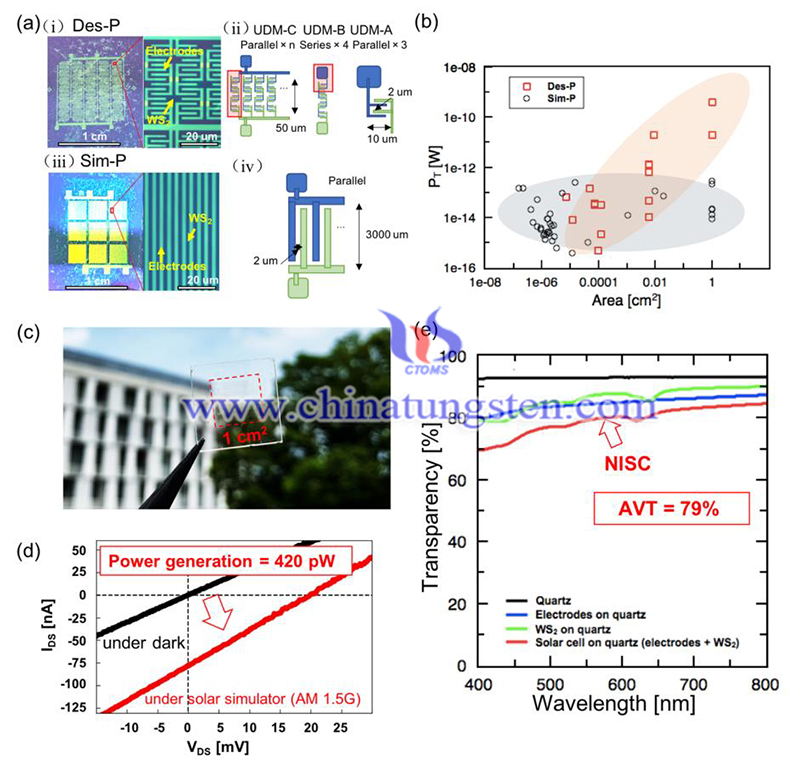Researchers Develop A Solar Cell with Up to 79% Transparency with WS2
- Details
- Category: Tungsten's News
- Published on Thursday, 28 July 2022 23:13
Transparent solar cells are expected to transform windows, greenhouses, and glass panels of smart devices into energy harvesting devices. A team of researchers from Tohoku University in Japan has created a nearly invisible solar cell using indium tin oxide (ITO) as a transparent electrode and tungsten disulfide (WS2) as a photoactive layer.

(Credit: Scientific Reports)
According to research published in the journal Scientific Reports, such cells have the potential to achieve 79 percent transparency and could help move TMD-based near-visible solar cells from the basic stage to true industrialization.
However, despite recent developments in perovskites and organic semiconductors, the average visible transparency of these solar cells is still below 70%. Creating more transparent solar cells remains a challenge.
This type of photovoltaic device is called a Schottky junction solar cell. The interface between the metal and the semiconductor provides the band required for charge separation. The proposed device and the ideal band structure separate the photogenerated electron-hole pairs by the difference in the work function between one of the electrodes and the semiconductor.
WS2, a member of the transition metal dichloride (TMD) material family, is claimed by scientists to be the optimal choice for near-invisible solar cells due to its acceptable band gap in the visible range and maximum absorption co-efficiency per unit thickness. The ITO-WS2 linkage is formed by sputtering ITO onto a quartz substrate and growing a tungsten disulfide monolayer using chemical vapor deposition (CVD) technology, according to PV Magazine.

(Credit: Scientific Reports)
The contact barrier between tungsten disulfide and indium tin oxide was adjusted by coating various thin metals on top of ITO (Mx/ITO) and introducing a thin layer of WO3 between Mx/ITO and monolayer WS2. As a result, the Schottky barrier height increases dramatically (up to 220 meV), potentially improving the efficiency of charge carrier separation in Schottky-type solar cells.
As a result, the researchers found that the solar cells with optimized electrodes (WO3/Mx/ITO) were more than 1,000 times more efficient in power conversion than the devices with ordinary ITO electrodes.
The researchers calculated that the total power of a 1cm² solar cell with a very high average visible light transmission value (79%) may be increased to 420pW by repeating the experiment on this optimized unit device with the right amount of series and parallel connections.
From telephone screens to skyscrapers, there are reportedly 5 to 7 billion square meters of glass surfaces in the United States. With the help of this research, researchers may be able to finally realize the development of transparent solar panels, which would have far-reaching implications.
(Source: INTERESTING ENGINEERING)
- Tungsten Manufacturer & Supplier, Chinatungsten Online: www.chinatungsten.com
- Tungsten News & Prices of China Tungsten Industry Association: www.ctia.com.cn
- Molybdenum News & Price: news.molybdenum.com.cn
- Tel.: 86 592 5129696; Fax: 86 592 5129797; Email: sales@chinatungsten.com